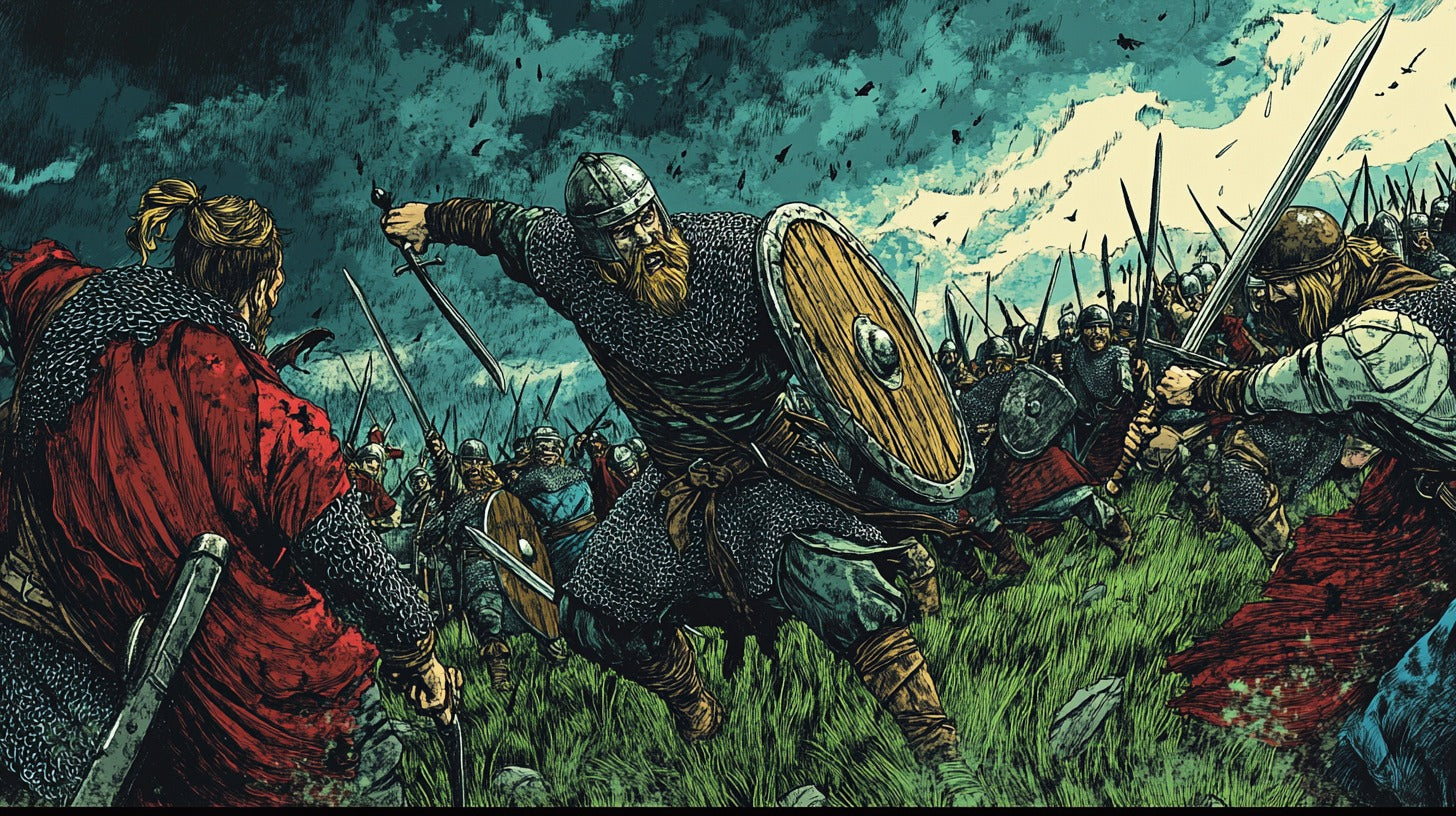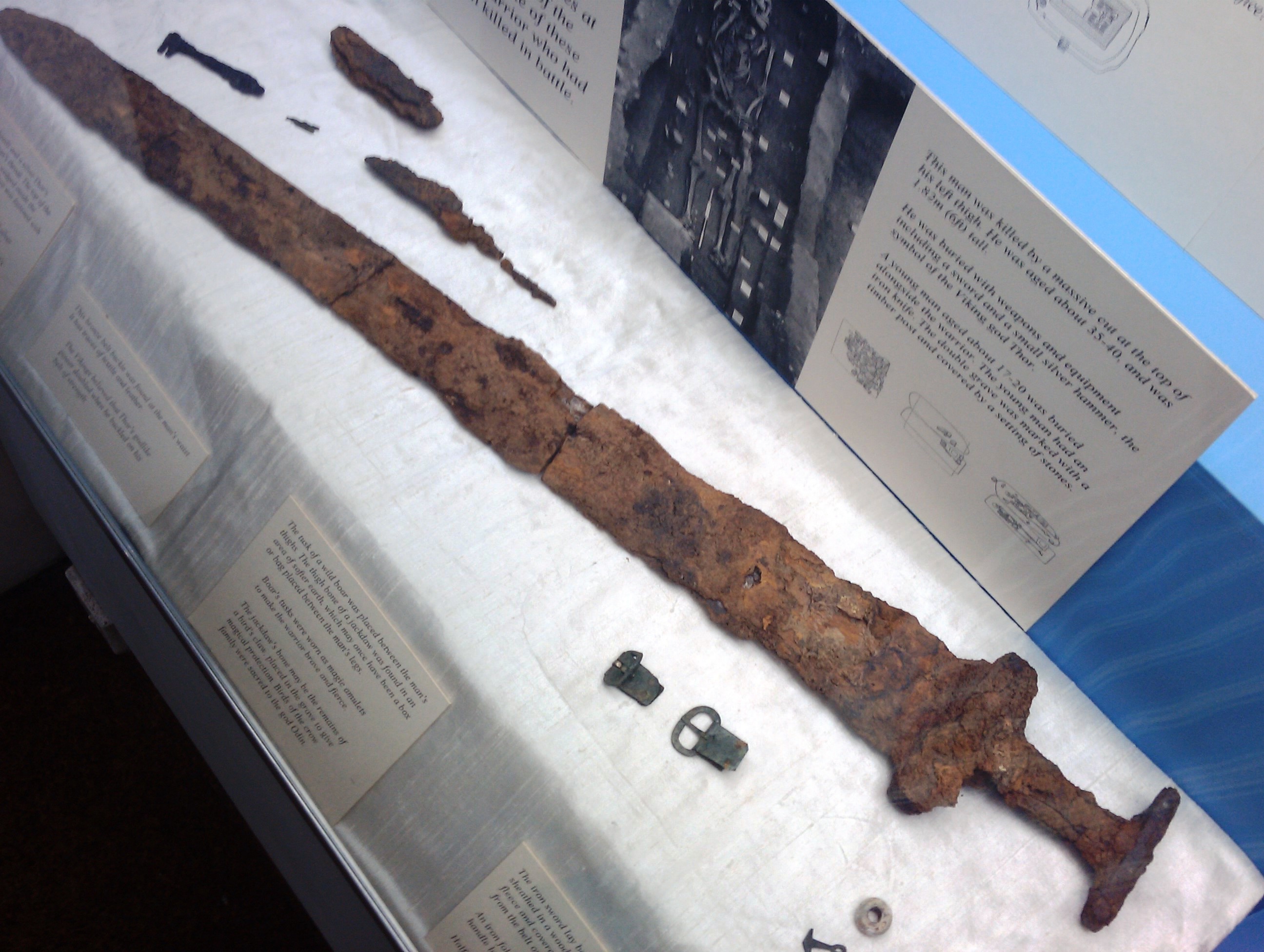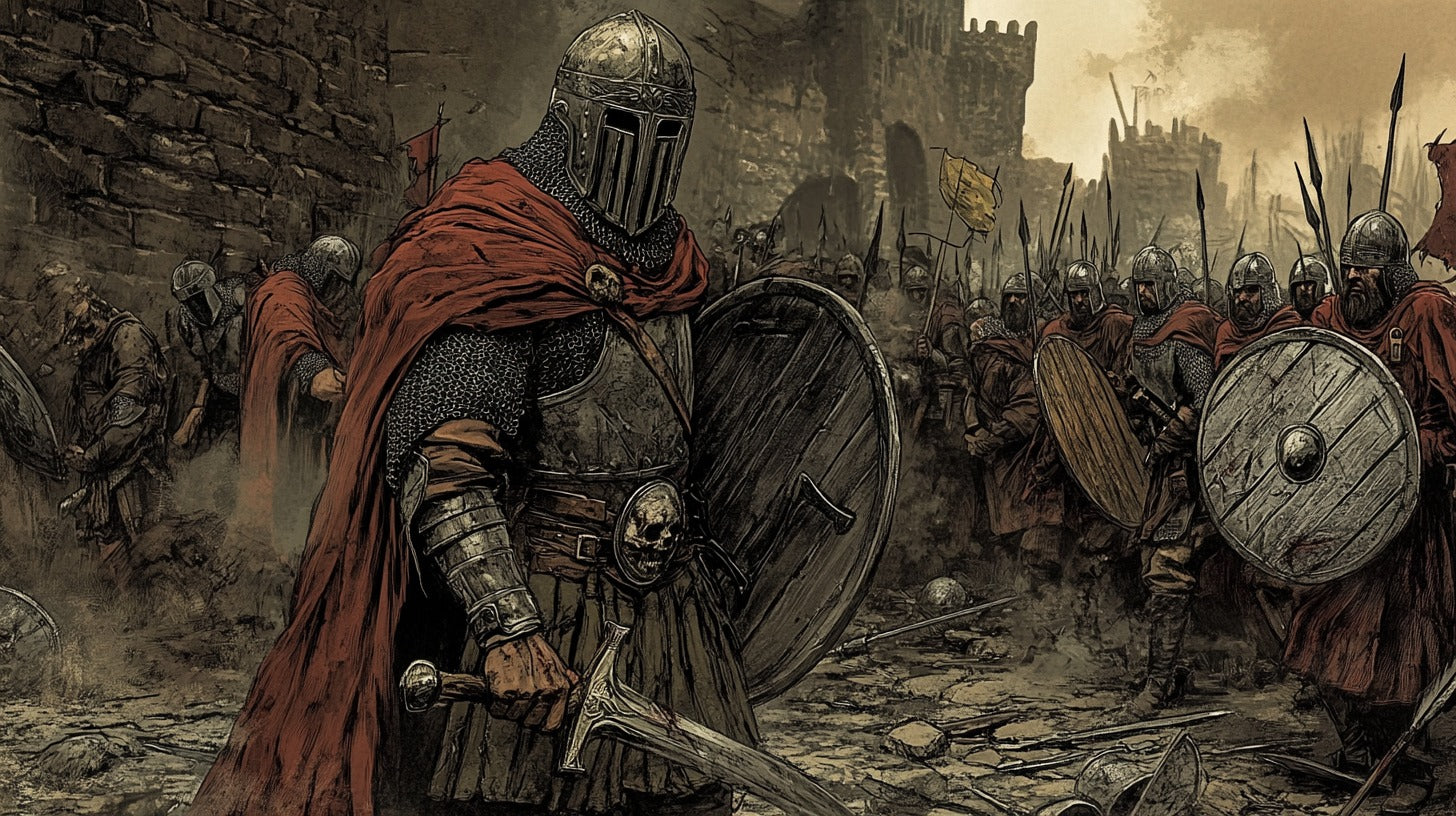
The Battle of Tettenhall: Anglo-Saxon Victory Over the Vikings (910 CE)
The Battle of Tettenhall, fought in 910 CE, represents a pivotal moment in Anglo-Saxon England's resistance against Viking incursions. This decisive engagement occurred during a period of increasing cooperation between the kingdoms of Wessex and Mercia against Norse raiders, ultimately reshaping the political landscape of medieval England.
The Viking Threat in Early 10th Century England
By the early 10th century, England faced consistent pressure from Viking forces. The Great Heathen Army's previous campaigns had established significant Norse presence in the Danelaw, while new waves of raiders continued to threaten Anglo-Saxon territories. The period between 902 and 910 CE saw intensified Viking raids across Mercia and Wessex, likely prompted by Norse expulsion from Dublin in 902. These raids became increasingly sophisticated and organized, presenting a severe threat to Anglo-Saxon sovereignty and territorial integrity.
Political Landscape of Mercia and Wessex
At the time of the battle, King Edward the Elder ruled Wessex, having succeeded his father Alfred the Great in 899. Mercia was governed by Æthelred, Lord of the Mercians, and his wife Æthelflæd (Edward's sister), known to history as the Lady of the Mercians. This political alliance between Wessex and Mercia proved crucial in organizing resistance against Viking incursions. The marriage alliance had strengthened both kingdoms' military capabilities and enabled coordinated responses to Viking threats that would have been impossible in previous decades.
Prelude to Battle

Viking Raids and Movements
The Anglo-Saxon Chronicle records that in 910, a significant Viking force moved south from Northumbria, launching a series of devastating raids into Mercian territory. The Viking army, led by several prominent jarls including Hálfdan and Eowils, demonstrated unprecedented coordination in their attacks. Their campaign represented more than mere raiding; it constituted a deliberate attempt to reassert Norse dominance over central England. Contemporary sources suggest the Vikings had gathered a substantial force, drawing warriors from across the Danelaw territories.
Anglo-Saxon Response
Edward the Elder and the Mercian forces under Æthelred coordinated their response with remarkable effectiveness. Contemporary sources, particularly the Anglo-Saxon Chronicle, indicate that the Anglo-Saxons engaged in a deliberate strategy to intercept the Viking army as it returned northward. This level of strategic planning marked a significant evolution in Anglo-Saxon military organization, moving beyond purely defensive reactions to Viking incursions.
The Battle

Yggdrasil World Tree & Eagle Norse Ring
Location and Terrain
The battle occurred at Tettenhall, near modern-day Wolverhampton in Staffordshire. Contemporary geographical analysis suggests the engagement likely took place on elevated ground suitable for the deployment of shield walls. The Anglo-Saxon forces demonstrated sophisticated tactical awareness in their choice of battlefield, using the terrain to their advantage. The location's strategic importance lay in its position along major north-south travel routes, making it an ideal position to intercept the returning Viking army.
Forces and Leaders
The Viking force comprised seasoned warriors from the Northumbrian Danelaw, while the Anglo-Saxon army included both West Saxon and Mercian contingents. While exact numbers are not recorded in contemporary sources, the scope of the engagement suggests both armies fielded substantial forces. The Anglo-Saxon army demonstrated unprecedented levels of coordination between Mercian and West Saxon units, suggesting careful pre-battle planning and organization.
Battle Strategy and Events
The Anglo-Saxon Chronicle provides compelling evidence that the combined forces of Wessex and Mercia executed a sophisticated battle plan. Rather than engaging in the typical shield-wall clash, the Anglo-Saxons appear to have manipulated the battlefield to their advantage, forcing the Vikings to fight at a disadvantage. The tactical sophistication displayed at Tettenhall represented a significant advance in Anglo-Saxon military capabilities.
Casualties and Immediate Aftermath
The battle resulted in catastrophic losses for the Viking force. Contemporary sources record the deaths of the Viking kings Eowils and Hálfdan, along with numerous other nobles and warriors. This devastation extended beyond mere casualties; it represented the destruction of a significant portion of the Viking leadership structure in northern England. The immediate aftermath saw a marked decrease in Viking military activity across English territories, as surviving Norse forces retreated to consolidate their remaining positions.
Long-term Historical Significance
The Battle of Tettenhall fundamentally altered the balance of power in early medieval England. The decisive victory enabled Anglo-Saxon forces to take the offensive, gradually extending their authority northward into the Danelaw. This shift marked the beginning of a new phase in English history, as the Anglo-Saxon kingdoms moved from a defensive posture to one of active reconquest. The cooperation between Wessex and Mercia demonstrated at Tettenhall established a template for future military and political collaboration.
Archaeological Evidence
Recent archaeological investigations have provided tangible evidence of the battle's scale and significance. Weapon fragments, burial sites, and topographical studies have corroborated contemporary written accounts. These findings have helped modern historians reconstruct the battle's likely progress and confirm its historical importance. Ongoing archaeological work continues to reveal new details about this pivotal engagement.

Viking sword from Repton, Mercia (Photo: Roger from Derby CC BY 3.0)
Conclusion
The Battle of Tettenhall stands as a watershed moment in English history, marking the point when Anglo-Saxon England began to assert decisive military superiority over Viking forces. The victory's significance extended far beyond the immediate battlefield, fundamentally reshaping the political landscape of medieval Britain. The successful cooperation between Wessex and Mercia, the sophisticated military strategy employed, and the devastating impact on Viking leadership all contributed to a fundamental shift in the balance of power. This battle, more than any other single engagement of its era, laid the groundwork for the eventual unification of England under Anglo-Saxon rule and the gradual decline of Viking influence in British affairs.
Frequently Asked Questions (FAQs)
- Why was the Battle of Tettenhall significant?
The battle marked a crucial turning point in Anglo-Saxon resistance to Viking dominance, resulting in the deaths of key Norse leaders and establishing a new balance of power in medieval England.
- Who were the main commanders at the battle?
Edward the Elder of Wessex and Æthelred of Mercia led the Anglo-Saxon forces, while Hálfdan and Eowils commanded the Viking army. Their deaths significantly impacted Norse leadership in Britain.
- How many casualties were there?
While exact numbers aren't recorded in contemporary sources, chronicles indicate catastrophic Viking losses, including multiple leaders and a significant portion of their fighting force.
- Where exactly was the battle fought?
The battle occurred near modern-day Wolverhampton in Staffordshire, though the precise location continues to be studied by historians and archaeologists.
- What were the battle's long-term consequences?
The victory enabled Anglo-Saxon expansion into the Danelaw, strengthened the alliance between Wessex and Mercia, and contributed significantly to the eventual unification of England.
References
The Anglo-Saxon Chronicle (Parker Manuscript)
Stenton, F.M. (1971) "Anglo-Saxon England", 3rd ed., Oxford University Press
Hadley, D.M. (2006) "The Vikings in England: Settlement, Society and Culture", Manchester University Press
Williams, A. (1991) "Edward the Elder: 899-924", Hambledon Press
Higham, N.J. & Ryan, M.J. (2013) "The Anglo-Saxon World", Yale University Press
"Derby Museum Viking Sword" by Roger from Derby, UK is licensed under CC BY 3.0.








